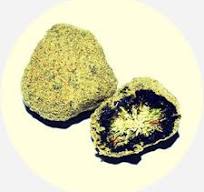The Fascinating Rocks of the Moon
As Earth’s celestial companion, the Moon has long captured the imagination of humanity. One of the most intriguing aspects of our lunar neighbour is its rocky surface, which holds valuable insights into the history of our solar system.
Origin and Composition
The rocks found on the Moon are primarily made up of igneous rocks, formed from solidified lava flows and impact processes. These rocks provide a window into the early history of our satellite and offer clues about its formation over billions of years.
Types of Lunar Rocks
There are three main types of rocks found on the Moon:
- Basalt: Basaltic rocks are prevalent on the lunar surface and are formed from solidified lava flows. They contain minerals such as pyroxene and olivine.
- Breccia: Brecciated rocks are composed of fragmented rock pieces fused together by impact events. They provide valuable information about meteorite impacts on the Moon.
- Anorthosite: Anorthositic rocks are rich in a mineral called anorthosite, which gives them their characteristic light colour. These rocks are believed to originate from the Moon’s crust.
Significance for Science
Studying lunar rocks not only helps us understand the geological history of the Moon but also provides insights into planetary formation processes in general. By analysing these rocks, scientists can unravel mysteries about the early solar system and Earth’s own evolution.
Moon Rocks on Earth
A select number of moon rocks have made their way to Earth through various space missions, such as the Apollo programme. These samples have been invaluable for scientific research and have deepened our understanding of lunar geology.
In Conclusion
The study of moon rocks continues to be a fascinating field that sheds light on both lunar mysteries and broader planetary science questions. As we strive to uncover more secrets hidden within these ancient stones, we move closer to unravelling the enigmatic history of our celestial companion.
Essential Tips for Safely Handling and Analysing Moon Rocks
- Handle moon rocks with care to avoid contamination.
- Use proper equipment when studying moon rocks to prevent damage.
- Keep detailed records of the location and conditions in which moon rocks are found.
- Consult with experts in geology or lunar science for guidance on analysing moon rocks.
- Follow established protocols for handling, storing, and transporting moon rocks.
Handle moon rocks with care to avoid contamination.
When handling moon rocks, it is crucial to exercise caution and care to prevent contamination. These precious samples carry invaluable scientific information that can be compromised if exposed to external elements. By following strict protocols and procedures for handling moon rocks, researchers can ensure the preservation of their integrity and authenticity, allowing for accurate analysis and deeper insights into the mysteries of the lunar surface.
Use proper equipment when studying moon rocks to prevent damage.
When delving into the study of moon rocks, it is crucial to utilise appropriate equipment to safeguard these precious specimens from any potential harm. By employing the correct tools and techniques, researchers can ensure the integrity and preservation of these invaluable lunar rocks, allowing for accurate analysis and a deeper understanding of their composition and significance in unravelling the mysteries of our celestial neighbour.
Keep detailed records of the location and conditions in which moon rocks are found.
It is crucial to maintain meticulous records of the location and environmental conditions in which moon rocks are discovered. By documenting these details, scientists can accurately contextualise the samples and gain valuable insights into the geological processes that shaped them. Understanding the specific site and conditions of each rock’s origin is essential for interpreting their composition and history, ultimately deepening our understanding of the Moon’s formation and evolution over time.
Consult with experts in geology or lunar science for guidance on analysing moon rocks.
When delving into the analysis of moon rocks, it is highly advisable to seek guidance from experts in the fields of geology or lunar science. Consulting with these knowledgeable individuals can provide invaluable insights and expertise that are crucial for accurately interpreting the composition, origin, and significance of lunar rocks. Their guidance can help ensure that the analysis is conducted effectively and that the findings contribute meaningfully to our understanding of the Moon’s geological history and broader scientific inquiries.
Follow established protocols for handling, storing, and transporting moon rocks.
It is crucial to adhere to established protocols when handling, storing, and transporting moon rocks. These protocols are in place to ensure the preservation of these valuable extraterrestrial samples and to prevent any contamination or damage. By following strict guidelines, scientists can maintain the integrity of the rocks and extract accurate data for further research. Proper handling procedures also help safeguard against any potential hazards associated with handling lunar materials. Therefore, it is essential to respect and follow the prescribed protocols to uphold the scientific significance of moon rocks.

